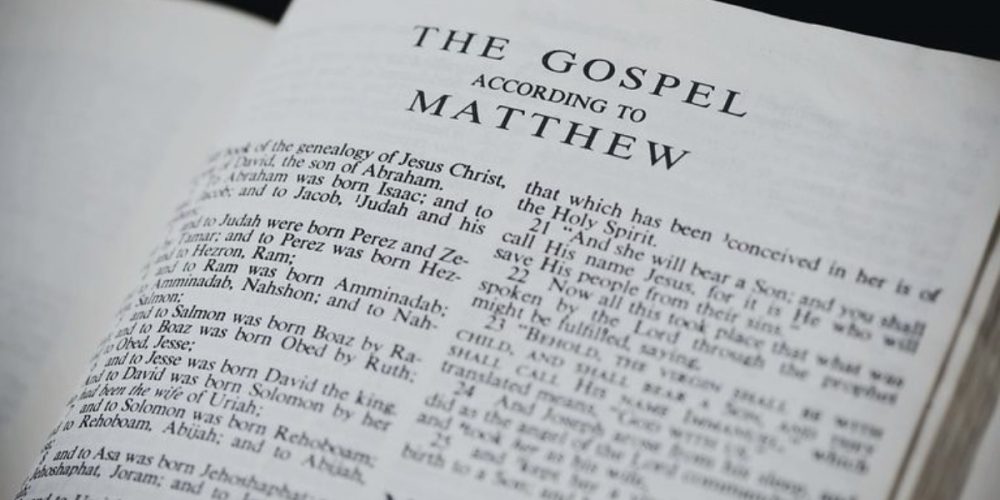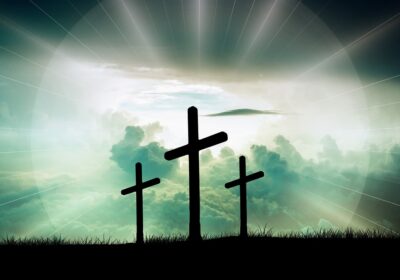Background and Scope
This is part of a series exploring how Jesus is depicted in the Gospels. Many scholars have noted that John’s Gospel proclaims a majestically high Christology. Indeed some have seen in John a Christology that finds no parallel in the other Gospels.[ref]See e.g. Raymond E. Brown, The Birth of the Messiah: A Commentary on the Infancy Narratives in the Gospels of Luke and Matthew, New Updated Edition, The Anchor Bible Reference Library (New York: Doubleday, 1993), 29-32.[/ref] To put it simply, “If Jesus was as He is depicted in Matthew and Mark and Luke, He cannot have been as He is depicted in John. The two are incompatible.”[ref]Leon Morris, The Gospel According to John, New International Commentary on the New Testament, Gen. Ed. F.F. Bruce (Grand Rapids: Eerdman’s, 1971), 45. Morris states the maxim though he disagrees with it.[/ref]
But is this contrast between John and the Synoptics accurate? Does it give a fair reading to the Christological titles and roles assigned to Jesus by the other evangelists?
The purpose of this series is to explore the Christology of all four Gospels and determine if there is indeed such a rift between John and the Synoptics. For now we will limit ourselves to the depiction of Jesus in the opening scenes of each. While all four evangelists approach Jesus’ coming into the world from a unique perspective, they all connect his entry into human history with the ministry of John the Baptist, culminating in their encounter at the Jordan.[ref]We must also put aside various questions in the text including authorship, audience, historicity, textual variants, and the Synoptic Problem. These, and other issues, will only be considered when they directly impact the question, “Do the Synoptics as we currently have them present Jesus in the highest Christological terms from the outset or is this a unique feature of John’s Gospel?” This series will answer this question by surveying the gospels in the order in which they were likely written (Mark, Matthew, Luke, John). For a defense of this chronology see Raymond E. Brown, Introduction to the New Testament, The Anchor Bible Reference Library (New York: Doubleday, 1997) 164, 217, 274, 368-371.[/ref]
Matthew
Theologian Ulrich Luz is correct that, “Matthew’s Christology is more than a semantic field structured by titles. Rather it is the story of a human being in whom God is and was ‘with us’.”[ref]Ulrich Luz, Studies in Matthew, trans. Rosemary Selle (Grand Rapids, MI, William B. Eerdman’s Publishing Company, 2005), 96. C.f. discussion of Christology and titles in France, 280-281.[/ref] Thus we will consider the broad motifs related to Jesus as they occur in the opening scenes of Matthew’s narrative in order to sketch a portrait of the evangelists’ Christological concerns.
The Record
Matthew begins, “The record of the genealogy of Jesus the Messiah,[ref]NRSV, NASB have “the Messiah” while NIV, NKJV have “Christ”. The Greek is Christou with no article supplied. The title “Christ/Messiah” occurs with the definite article just seven times in the Synoptics, six of them in Matthew. When used in reference to Jesus the title should be understood as “an embodiment of the faith of the early church,” Brian M. Nolan, The Royal Son of God: The Christology of Matthew 1-2 in the Setting of the Gospel, Orbis Biblicus Et Orientalis, 23 (Fribourg, Switzerland: Editions Universitaires Fribourg Suisse, 1979), 116. Brown understands “Jesus Christ” (Matt 1:1, 1:18) to be almost a proper name, derived from the devolution of “Jesus the Messiah” to “Jesus the Christ” to “Jesus Christ” in early Christian usage (Birth, 59).[/ref] the Son of David, the Son of Abraham.” (Matt. 1:1) That Messiah should be understood as referring to the “Messianic King” of Jewish expectation seems clear.[ref]Craig S. Keener, Matthew, The IVP New Testament Commentary Series, ed. Grant R. Osborne, (Downer’s Grove, IL: InterVarsity Press, 1997), 52.[/ref] That it is equivalent to “Son of David” in the author’s mind is also likely.[ref]Nolan, 149.[/ref] However Messiah should not be understood strictly as a title, but in the broader context of what the gospel reveals about Jesus. For in Matthew Jesus ultimately exceeds all that the Jews expected of the Messiah. The title, while accurate, is thus inadequate.[ref]Brown, Raymond S. The Birth of the Messiah: A Commentary on the Infancy Narratives in the Gospels of Luke and Matthew, New Updated Edition, The Anchor Bible Reference Library (New York: Doubleday, 1993), 135-136.[/ref] Its full meaning must be derived from the remainder of what is said about Jesus.[ref]R. T. France suggests that the Messianic secret for Matthew owes to the fact that Matthew wanted his audience to see Jesus as Messiah, but not strictly according to their Messianic expectations. France. Matthew: Evangelist & Teacher, New Testament Profiles (Downer’s Grove, IL: InterVarsity Press, 1989), 282-283.[/ref]
Son of David
“Son of David” has a greater prominence in Matthew than in the remainder of the New Testament.[ref]Matthew uses the term 10 times (more than the remainder of the New Testament combined), Mark and Luke only 4, John does not utilize it (Brown, Birth, 134). Seven of his usages are unique to Matthew (France, 284).[/ref] But what does the title convey? To be sure the Son of David is the Messiah and the rightful heir to David’s throne.[ref] Craig S. Keener, Matthew, The IVP New Testament Commentary Series, ed. Grant R. Osborne, (Downer’s Grove, IL: InterVarsity Press, 1997), 52. See also France, 286 and Daniel J. Harrington, The Gospel of Matthew, Sacra Pagina Series, Volume 1, ed. Daniel J. Harrington (Collegeville, MN: The Liturgical Press, 1991), 32.[/ref] However, Luz argues that the tradition history of the phrase is insufficient to establish its meaning for Matthew. Rather, Matthew utilizes the phrase to make a connection with his audience, before pushing them to a much greater understanding of the term.[ref]Luz, 85ff. Thus “Son of David” is connected with the extension of mercy and physical healing, activities not expected of him by the Jews (cf. Luz, 86-87). As a result the blind, religiously ignorant, and even foreigners recognize Jesus as the Son of David, while the religious elite reject Him (France, 285).[/ref]
The Genealogy
That Matthew’s genealogy is highly selective and serves a deliberate theological purpose is obvious.[ref]France, 284.[/ref] Hebrew genealogies were generally given in order to demonstrate identity via tribal origins, under gird one’s official status (e.g. kings, priests), or underscore a collective personality.[ref]Brown, Birth, 64-66.[/ref] Matthew utilizes Jesus’ genealogy[ref]Or, more technically, Jesus’ genealogy via his “legal” father Joseph. For a discussion of Joseph’s “legal” vs. “adoptive/foster” paternity of Jesus see Brown, Birth, 138-139.[/ref] in each of these ways, identifying Jesus as Son of David,[ref]France, 284.[/ref] of the tribe of Judah, who would restore Israel and enlighten the nations.[ref]Nolan, 169.[/ref] Thus Jesus’ lineage prepares the reader for the conclusion that He is the climax of Israel’s national history, and has a Gentile-mission.[ref]Keener (Matthew, 55) and Harrington (32).[/ref] He is the prophesied Messiah/King and “Son of David” of 2 Samuel 7:13-14.[ref]Rudolf Schnackenburg, The Gospel of Matthew, trans. Robert R. Barr, (Grand Rapids, MI: William B. Eerdman’s Publishing Company, 2002), 16.[/ref]
Child of the Holy Spirit
If the genealogy communicates that Jesus was the Son of David, the conception and birth stories proclaim that He is the Son of God.[ref]Harrington, 36. Cf. France, 297.[/ref] Indeed, Brown sees in the announcement of the angel of the Lord (Matt. 1:20)—and not the baptism scene—the first time in Matthew that God calls Jesus “Son.”[ref]Brown, Birth, 135 where he argues that in light of the Old Testament the “angel of the Lord” should be understood as God’s presence in the earth. Connected to this however is Brown’s speculative assertion that the growth of Christological understanding in the early church can be traced through Acts/early epistles (God naming Jesus Son at resurrection) to Mark (God naming Jesus Son at baptism), to Matthew & Luke (God naming Jesus Son at conception), to John/Christological hymns (God naming Jesus Son in pre-existence). This theory of Christological development colors Brown’s entire treatment of the gospel (Brown, Birth, 140-142). One obvious objection to such a notion is that according to Brown Luke reflects a later development in Christological understanding than Acts, although according to Brown (c.f. Intro, 319-327) Luke was likely written earlier than Acts by the same author![/ref] The conception by the Spirit and the virgin birth serve Matthew’s ultimate goal to “explain and exalt the character of the Lord,”[ref]Keener, Matthew, 64.[/ref] and demonstrate that Jesus—unlike all those who came before in His genealogy—is the product of divine, not natural, begetting.[ref]Brown, Birth, 138-143.[/ref]
Jesus, Immanuel
Jesus’ name is explicitly given salvific force in Matthew. We have noted that Jesus means literally “God/Yahweh saves”[ref]Schnackenburg, 19.[/ref], but here the saving activity is explicitly assigned to Jesus, “for He will save His people from their sins.”[ref]Italics mine. This verse harks back to Moses, another deliverer of God’s people spared from the massacre of infants carried out by an evil king. But it also reminds the reader of Joshua, the eponymous savior of Israel who led them from wilderness to Promised Land (c.f. Brown, Birth, 137-138).[/ref] Brown sees allusions to numerous Old Testament texts here including Ps. 130:7-8, “the LORD…will redeem Israel from all his iniquities.”[ref]Brown, Birth, 152.[/ref] This further enforces the notion that in Jesus God is uniquely at work in the earth, as expressed in the name “Immanuel.”
Scholarly Debate
Scholars disagree on Matthew’s intention in his use of the Immanuel passages (Isaiah 7:14, Isaiah 8:8-10). For New Testament scholar Rudolf Schnackenburg it means “In Jesus God is helping, redeeming, protecting his people.”[ref]Schnackenburg, 19. See also, Nolan, 131.[/ref] Biblical scholar Raymond Brown insists that we understand Immanuel to mean that in Jesus God’s eschatological—not personal—presence has come.[ref]Brown, Birth, 150-153. Again, this owes entirely to Brown’s presupposition that incarnational theology evolved after the writing of Matthew and is unique to John, a contention that is hardly incontrovertible.[/ref] Luz goes further in saying that Jesus is, “the new and definitive form in which God is present with his people.”[ref]Luz, 85. For Luz “Immanuel Christology” frames the entirety of Matthew’s gospel (85), which taken together with other elements results in a “high” Matthean Christology, “from above” (94).[/ref] Richard France however claims that Matthew’s use of “God with us”, rather than the weaker “God is with us” to render the name “at least leaves open the startling idea that this baby is himself God, present among men.”[ref]France, 312.[/ref] Craig Keener asserts that “Immanuel” is an example of Matthean Christology recognizing Jesus as God.[ref]Keener, Matthew, 64.[/ref]
It is our view that one must first impose a low Christology on the gospel[ref]As, for example, Brown does with his theory of Christological development (c.f. Brown, Birth, 140-142).[/ref] in order to not see an exalted one here in Matthew’s opening scenes. This Jesus is the Messiah, the Son of David, conceived in a virgin by the Holy Spirit. His two names proclaim that He will save His people from their sins, as He is God with them. The equivalence suggested here between Father and Son is assumed throughout Matthew’s gospel as Jesus acts in God’s place, taking on divine prerogatives, receiving worship, and fulfilling Old Testament Scriptures that spoke exclusively of Yahweh.[ref]France, 308-311.[/ref] Thus in Jesus God is personally with us.
King of the Jews
It is sufficient to note that “King of the Jews” (Matt. 2:2) was understood to mean both Messiah,[ref]C.f. Matthew 2:4. This Messiah would be a “ruler” and “shepherd” to the people of Israel (c.f. Matt 2:6). The identification of Bethlehem as the Messiah’s birthplace is unequivocal (Schnackenburg, 23).[/ref] and a usurper to Herod’s throne, as “King of the Jews” was Herod’s official title.[ref]Harrington, 42.[/ref] Thus Herod understandably considered Jesus to be a threat to his unpopular rule.[ref]Brown, Birth, 170. Herod’s massacre of the innocents then, however horrific to us today, is in line with his insecurity and his cruel personal nature (c.f. Nolan, 150-154).[/ref]
They Fell to the Ground and Worshiped Him
The coming of the magi[ref]Keener sees the pilgrimage and homage of the nations vis a vis Ps 72:10, Is 60:6 (Keener, Matthew, 67) while for Brown it anticipates the coming of the Gentiles to faith in Christ (Brown, Birth, 169).[/ref] is a striking scene, in which Gentile astrologers travel long distance to prostrate in worship[ref]Gk. prosekunesan.[/ref] before the infant Jesus.[ref]Keener (Matthew, 67) and Schnackenburg (24) both see genuine worship here, contra Harrington (42) who seems more comfortable with “homage.”[/ref] It is important for our study to note that no player in John’s gospel worships Jesus until He works miraculous signs as an adult.
John’s Proclamation
John’s ministry in Matthew serves much the same purpose as in Mark. He functions like an Old Testament prophet, proclaiming the coming work of God, in this case the arrival of a Messiah/Judge figure whose presence calls for repentance and cleansing from sin.[ref]Keener, Matthew, 75-81.[/ref] The “superhuman” rank of the One he foretells is made explicit in John’s unworthiness to “remove his sandals.”[ref]Matthew 3:11. C.f. Keener, Matthew, 83. In John’s time servants removed sandals and Old Testament prophets could rightly call themselves the servants of God. But John is not even worthy to be servant/slave to the coming One (c.f. Harrington, 54 and Schnackenburg, 32).[/ref] John’s proclamation of a coming One who would pour out the Spirit and act as Judge prepares for the coming of God Himself, these are things that only God can do.[ref]See e.g. Keener (Matthew, 83), Harrington (54), and Schnackenburg (33).[/ref]
Encounter at the Jordan
Jesus’ submission to John’s baptism is part of Matthew’s concern to describe Him as the righteous Son of God.[ref]Luz, 93.[/ref] The opening of the heavens prepares for future revelation or deliverance [ref]C.f. Isaiah 64:1.[/ref] and the dove may recall the life and salvation offered after the flood.[ref]Keener, Matthew, 85-86.[/ref] The voice from heaven, along with the Scriptures and the Baptist, acts as a third direct witness to Jesus’ identity.[ref]Ibid., 86. If the angel of the Lord’s proclamation is considered, this would be the fourth witness.[/ref]
This is My Beloved Son…
Matthew’s picture of Father, Spirit and Son at the baptism anticipates Jesus’ final words (Matt. 28:19) and underscores the Son’s special relationship with the Father. As with the other evangelists, particularly John, “The presentation of Jesus as the Son of God is central to Matthew’s theological enterprise,” and the voice at the baptism is clearly, “a declaration that Jesus is the Son of God.”[ref]France, 293. Jesus’ divine Sonship had been implied by the conception account (Matt 1:18ff) and intimated by the flight from Egypt (Matt 2:15). Here it is stated explicitly. If Schnackenburg is right that we should understand the voice as God’s and not the traditional bath qol (“daughter/echo of the voice”) then the theophany is considerably strengthened (Schnackenburg, 35).[/ref] The background for the words spoken to Jesus is a compilation of Old Testament texts[ref]Psalm 2:7, Isaiah 42:1, 2 Samuel 7:16.[/ref] that combine to convey the intended point.[ref]Keener, Matthew, 86.[/ref] Matthew’s depiction of Jesus as Son of God demonstrates the unique relationship between Father and Son, and points forward to the unique status of the Son who receives worship, has all authority, and is named alongside Father and Spirit.[ref]France, 292-298. C.f. Luz (93), “[Son of God] denotes Jesus’ special and unique relation to God and his unique God-given status.”[/ref] In Matthew only God can reveal Jesus as His Son, as He does here at the baptism.[ref]Luz, 93. C.f. Matthew 1:22-23, 2:15, 3:17, 11:25-27, 16:17, 17:5.[/ref]
Summary
For Matthew Jesus is the Christ, the Son of God, from the opening scenes (Matt. 1:1 3:17) to Peter’s confession (Matt.16:16) to Jesus’ own testimony under oath (Matt. 26:63-64). This Jesus who is by human lineage the descendant of David, is by spiritual lineage the Son of God, indeed, He is God with us. And He is the One who promises to be with His disciples, “even to the end of the age.”[ref]Matthew 28:20. C.f. France, 312 and Brown, Birth, 153.[/ref] Thus Matthew can be seen as presenting not only an exalted Christology but an incarnational one as well.[ref]C.f. Luz, 96 who points out that Matthew’s combination of Son of Man and Son of God motifs throughout his gospel “anticipates remarkably closely the doctrine of the two natures in the later church.”[/ref]
PDF Original Version
As a believer who has been recreated to lead through Christ, it is important to recognize that you are also a theologian. Theology gives you the tools to examine your own beliefs about God, and also helps you communicate Christian beliefs in a meaningful way that others can understand. You can become better equipped in your daily influence for Christ by taking advantage of the following resources:
- Read Why You Should Care About Theology.
- Read other articles in our God Thoughts category.
- Join Artios Christian College‘s diverse community of students and instructors who recognize the significance of theological tools in their development as Christian leaders. LEA 111 Essentials of Vibrant Leadership is a great introductory course.
- The Great Exchange - November 6, 2020
- The Good, the Bad, and the Ugly: Leadership Lessons from Esther - November 3, 2020
- Let Justice Roll - October 23, 2020






